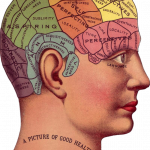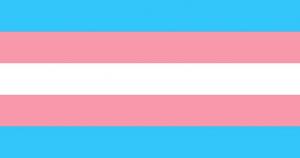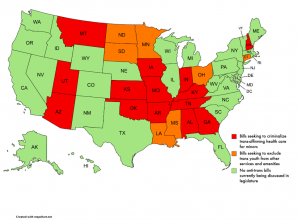So! God made man male and female, and that’s normally straightforward enough, but in a small minority of cases people are intersex, with male and female characteristics mixed. What does that have to do with trans people? They aren’t intersex.

Well, hang on. The salient characteristic of intersexuality is a mixture of female and male traits. Isn’t self-concept as female or male—i.e., gender identity—one of the things that’s a gendered trait? It isn’t the same thing as a chromosomal irregularity or an unusual phenotype, no. It’s psychological. But all the same, female-bodied people thinking of themselves as women, and male-bodied people thinking of themselves as men, are the norm. Male gender identity with a female body is a mixture of gendered traits; female gender identity with a male body is a mixture of gendered traits. And we know these mixtures can happen physiologically—so do we in fact have good grounds to instantly dismiss the validity of trans identities?
Along these lines, there are some trans people, known as trans medicalists, who make primarily scientific defenses of trans identities. They generally argue that trans identity is defined by the experience of gender dysphoria. So what’s that?
Gender dysphoria is a name for the distress felt by someone whose inner sense of gender identity is inconsistent with their physical sex. (1) Symptoms include distaste for or even disgust at one’s own genitalia and other sexual traits, desires to be and to be seen as the other sex, and mood disorders like anxiety and depression. Most, though not all, people who identify as trans experience some amount of dysphoria. It’s been suggested that differences in brain structure contribute to, or even cause, gender dysphoria. Some studies support this, though the question remains in dispute.
But still, at least brain structure is an objective, biological fact. Right?

Yes and no. (Go not to the Elves for counsel …) For one thing, the gendered traits of brains are statistical averages. They are not different structures the way a vagina and a penis are different structures. A cis man might have an atypical brain, one resembling an average cis woman’s, and still identify quite comfortably as male. These are general patterns, not inevitable rules: like the body itself, they mostly line up without being perfectly neat and tidy every time.
So where does that get us? If there isn’t a serious biological basis for trans identities, why give them the time of day? Chalk it up to mental illness and move on.
I don’t think that’s the right answer either, for a couple of reasons. One is that we don’t know there’s no biological basis for trans identities. We don’t have proof that there is a biological basis for it, but that’s different. It’s a reason to be cautiously agnostic, not a reason to definitely claim no basis exists. But there is another and, to my mind, more serious problem with this approach that I think should trouble the mind of any Catholic and indeed any Christian: why are we defining reality wholly in terms of what’s scientifically provable?
Part Three; Part Four; Part Five; Part Six
(1) The specific term gender dysphoria is fairly recent: it was only added to the DSM, the standard manual of psychiatry, in 2013. But the thing itself is older. Earlier works refer to it as gender identity disorder, a phrase considered pejorative today.
Images via Pixabay












